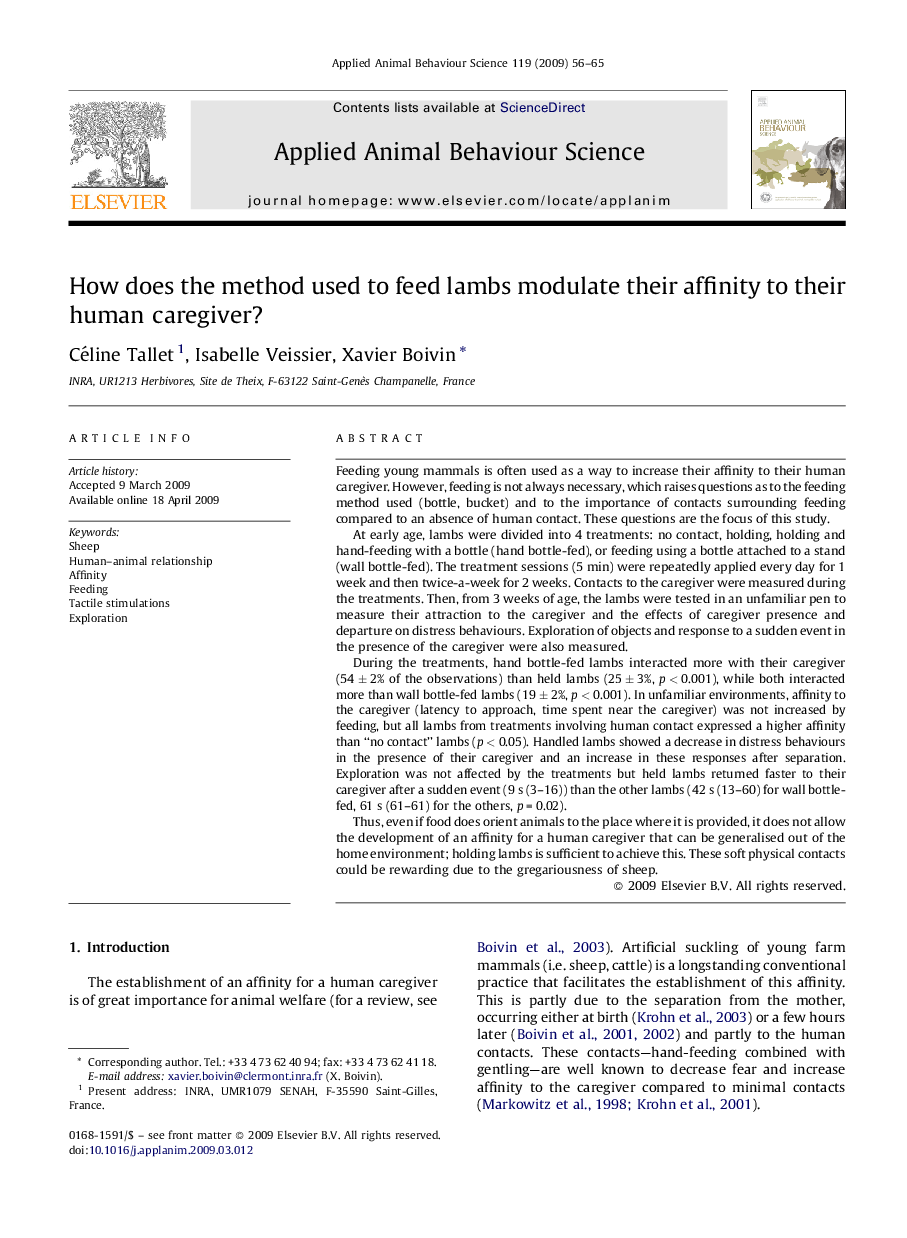| کد مقاله | کد نشریه | سال انتشار | مقاله انگلیسی | نسخه تمام متن |
|---|---|---|---|---|
| 4523593 | 1625409 | 2009 | 10 صفحه PDF | دانلود رایگان |

Feeding young mammals is often used as a way to increase their affinity to their human caregiver. However, feeding is not always necessary, which raises questions as to the feeding method used (bottle, bucket) and to the importance of contacts surrounding feeding compared to an absence of human contact. These questions are the focus of this study.At early age, lambs were divided into 4 treatments: no contact, holding, holding and hand-feeding with a bottle (hand bottle-fed), or feeding using a bottle attached to a stand (wall bottle-fed). The treatment sessions (5 min) were repeatedly applied every day for 1 week and then twice-a-week for 2 weeks. Contacts to the caregiver were measured during the treatments. Then, from 3 weeks of age, the lambs were tested in an unfamiliar pen to measure their attraction to the caregiver and the effects of caregiver presence and departure on distress behaviours. Exploration of objects and response to a sudden event in the presence of the caregiver were also measured.During the treatments, hand bottle-fed lambs interacted more with their caregiver (54 ± 2% of the observations) than held lambs (25 ± 3%, p < 0.001), while both interacted more than wall bottle-fed lambs (19 ± 2%, p < 0.001). In unfamiliar environments, affinity to the caregiver (latency to approach, time spent near the caregiver) was not increased by feeding, but all lambs from treatments involving human contact expressed a higher affinity than “no contact” lambs (p < 0.05). Handled lambs showed a decrease in distress behaviours in the presence of their caregiver and an increase in these responses after separation. Exploration was not affected by the treatments but held lambs returned faster to their caregiver after a sudden event (9 s (3–16)) than the other lambs (42 s (13–60) for wall bottle-fed, 61 s (61–61) for the others, p = 0.02).Thus, even if food does orient animals to the place where it is provided, it does not allow the development of an affinity for a human caregiver that can be generalised out of the home environment; holding lambs is sufficient to achieve this. These soft physical contacts could be rewarding due to the gregariousness of sheep.
Journal: Applied Animal Behaviour Science - Volume 119, Issues 1–2, June 2009, Pages 56–65